Yvonne Craig: An Interview with the First Actress to Play Batgirl
Actress Yvonne Craig was part of one of the great pop culture explosions of the 1960s, the Adam West and Burt Ward Batman television show. Running from 1966 to 1968 (and airing twice a week on ABC during its first two seasons), the show was a campy delight for viewers of all ages.
The series became a media sensation right from its debut, and triggered a Batmania that ran right alongside that decade's Beatlemania and Bondmania (West used to refer to it as "The Three Bs of the 1960s").
But, as the expression goes, the flame that burns twice as bright, burns half as long, and that's what happened with the show. It had a spectacular first two seasons, but then ratings began to drop, the show started airing once a week in season 3 and Yvonne Craig was added as Barbara Gordon, aka Batgirl.
The actress was born on May 16, 1937 in Taylorville, Illinois. At the age of 10, she began studying ballet, which would eventually lead to a scholarship to New York's School of American Ballet. When she was 17 in 1954, she joined the Ballet Russe de Monte Carlo, where she remained for three years.
At that point, she moved to Los Angeles in the hopes of continuing her career in dance, but found herself unexpectedly cast in the 1959 film The Young Land, the money for which made her realize she might want to give this acting thing a try.
Craig began making television guest appearances (which would ultimately number in the dozens) and starred in about a dozen films, including Elvis Presley's It Happened at the World's Fair (1963) and Kissin' Cousins, followed by Mars Needs Women (1966) and James Coburn's In Like Flint (1967).
MUST-READ: Best Elvis Movies, Ranked — 12 of His Most Rockin 'n' Rollin' Roles
From September 1967 to March 1968 she played Batgirl, and right after Batman's cancelation, began making those guest appearances again, including an episode of the original Star Trek.
In her private life, she was married to Jimmy Boyd from 1960 to 1962 and then Kenneth Aldrich from 1988 until her death from breast cancer on August 17, 2015 at the age of 78.
While it may be over 50 years since Batman ended its run, the love for the show has never gone away, with it being handed down from generation to generation.
Some years ago, the entire series was released on Blu-ray, which is when we had the opportunity to speak to Yvonne Craig, that interview never appearing in the following format.
FIRST FOR WOMEN (FFW): It was pretty amazing to see the response that the complete Batman series got when it was released on Blu-ray.
YVONNE CRAIG: Well it is, and I think part of it is people have been waiting for so long. But part of it also is a sign of our times — everyone would like to go back to Flower Power rather than blowing people up in all these different places. People are looking for an escape, and this is not only an escape, but it’s silly and fun and pretty.
FFW: With lots of bright colors!
YVONNE CRAIG: Yes, which really helped to capture the interest of little kids, because they liked all that bright color and all of that camera work, and yet there was something in it for their parents, so they weren’t just sitting there saying, "Oh my God, another Sesame Street."
MUST-READ: 1970s TV Sitcoms: 106 Classic (and Not So Classic) Shows, and Where to Stream Them
FFW: When Adam and Burt signed on to play the roles of Batman and Robin, obviously it was an unknown quantity; nobody knew what the show was going to be. By the time you joined, it was already a phenomena.
YVONNE CRAIG: Yes it was, and I had been looking for a series to do, because I had been doing a lot of guest appearances and people do not attach a name to a face when you see guest stars. I had done a couple of pilots that didn’t go, and they called me for Batman and said, "We’re thinking about adding a girl."
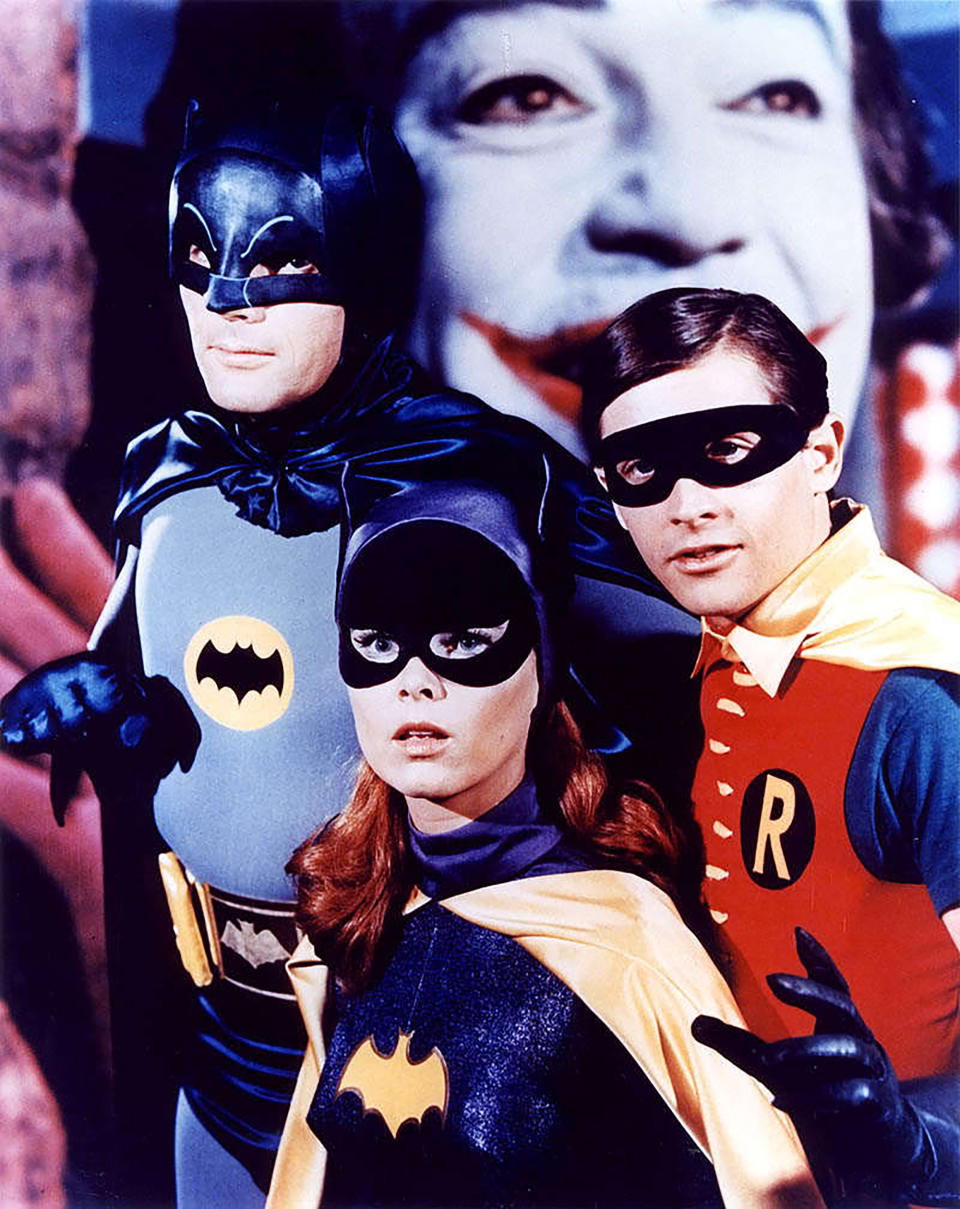
?Twentieth Television/courtesy MovieStillsDB.com
I had never seen the show, even though it was crazy popular — even when I was shooting Batman, I had a black and white TV, I’m a book reader, I’m not much of a TV looker, and so I just didn’t pay any attention.
Producer Bill Dozier called me in and said, "Well I’m sure you’ve seen our show," and I said, "Actually I haven’t, but I will. If I get this part. I will spend the summer watching re-runs, so I know how I’ll fit into the scheme of things."
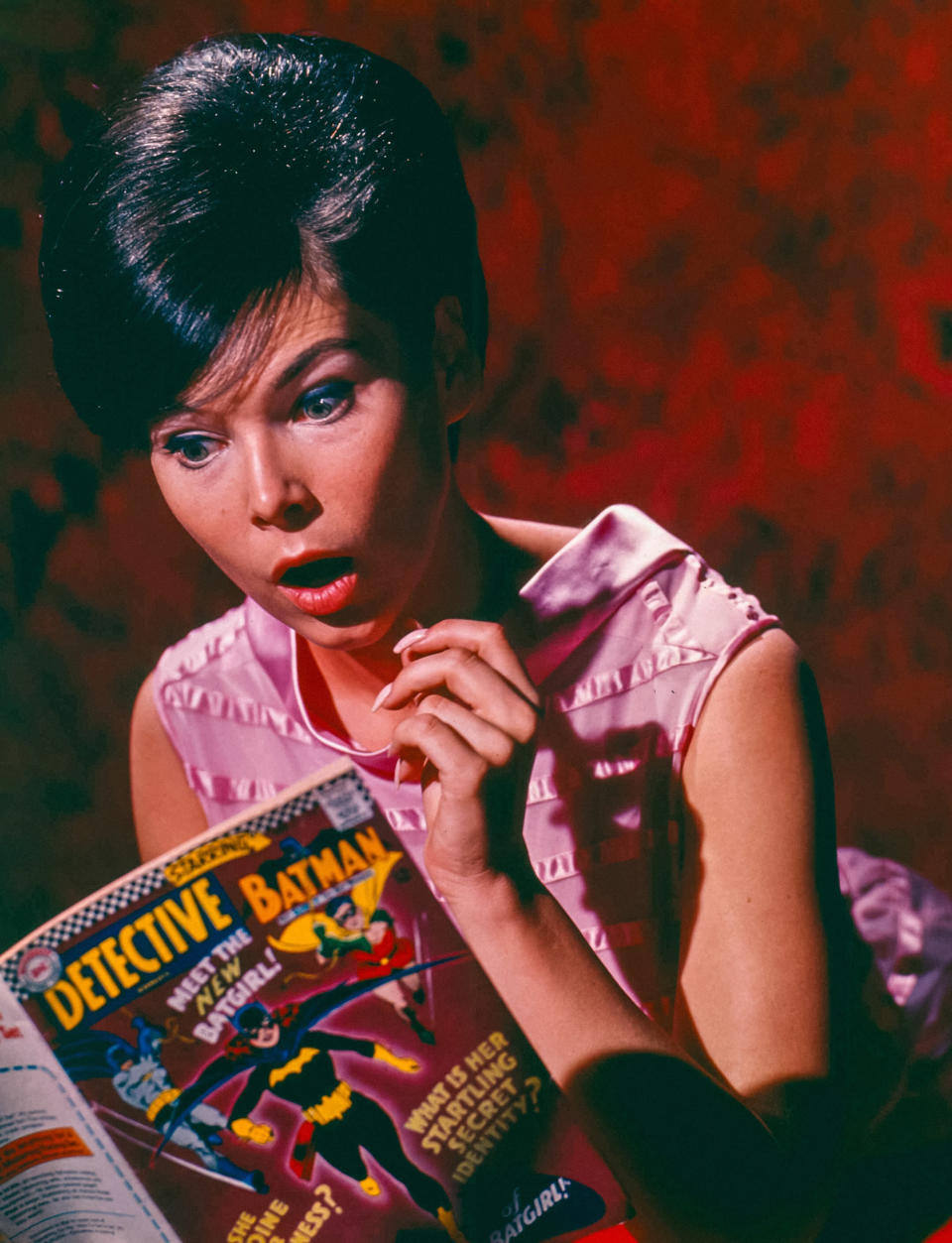
?Twentieth Television/courtesy MovieStillsDB.com
In any case, it was just, a wonderful job, it gave me a place to go, it paid me admirably. And it did for me what I wanted it to do: A little girl walked up to me one day in the supermarket and she said, "I know who you really are," and I thought she was going to say Yvonne Craig, but, instead, she said, "You're really Barbara Gordon." I thought, "Darn!" But she recognized me.
It was a wonderful show to do and I just really couldn’t believe that every morning I got to get up and go to work with people I would have never worked with otherwise. Someone like Ethel Merman — I don't do musicals, but Ethel Merman was on our show, and so was Milton Berle, who was a ton of fun. He just loved to gossip, but not bad gossip. He loved show business gossip and it definitely felt like he was keeping up with things.
FFW: Online there's a presentation of sorts that you did back then. Was that supposed to be part of the show?
YVONNE CRAIG: What happened was they decided they should put a younger woman in there, and said they wanted to go with someone who would appeal to the over 40s males, hence the spray-on costume.
In those days they didn’t do all these demographic studies, they were just missing a part of the audience — young girls — and so they did this seven-minute presentation, which was to be seen only by the executives from ABC and it was a quick thing.
In it, Barbara Gordon is a librarian, she sees the Moth Men at the table in the library, she hears there’s something going on, she takes off her skirt and turns it into a cape and she takes off her hat and turns it into a cowl. That was that and then we didn’t hear if they wanted the character or not.
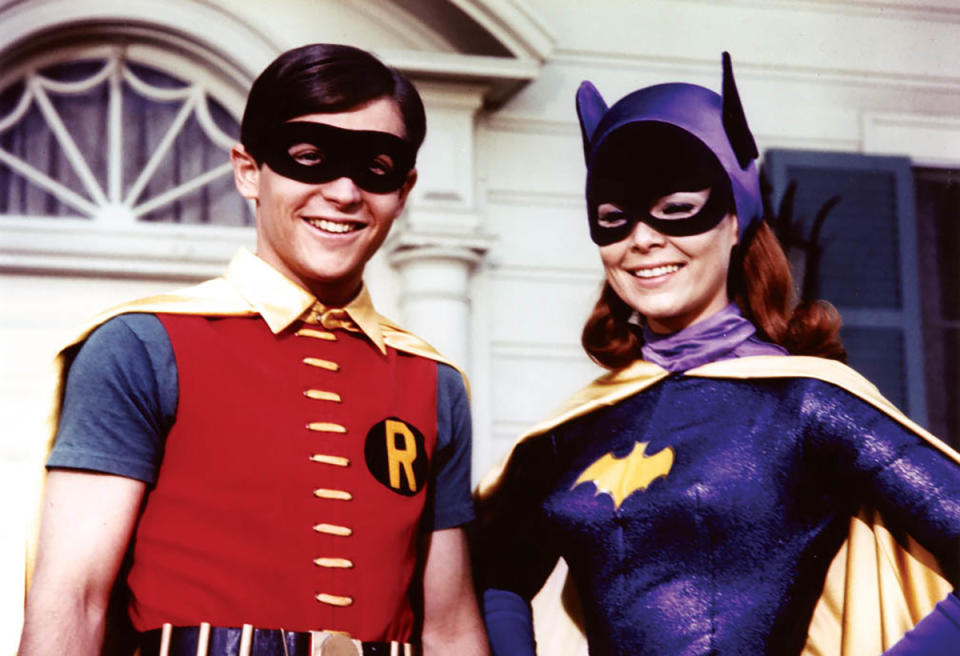
?Twentieth Television/courtesy MovieStillsDB.com
My agent called and said they want you to go back to Chicago for the NASTA convention, which was where independent TV stations were saying, "We'll buy this, we won’t buy that," and so they said do you want to go back and do that, and I said I would be happy to, but I don't want to say to everyone, "I'm on the Batman show," if that's not the case. I still ended up going without any news.
When we were going from the hotel to the venue through a tunnel, somebody came up to me and said, "They just said yes!" And then I almost embarrassed myself, because as I walked out there, somebody said, That Girl and I thought they said Batgirl. Someone grabbed me just before I walked out of the wings as Marlo Thomas walked out on stage. It would have been horrible, except she was a nice lady, so it probably wouldn't have been that horrible.
MUST-READ: That Girl Cast — A Look Back at the Groundbreaking '60s Sitcom

?Twentieth Television/courtesy MovieStillsDB.com
FFW: Obviously this show wasn’t a character piece, nonetheless did you get into the character's head at all?
YVONNE CRAIG: I was a lot like Barbara Gordon — I would happily have been a librarian, I love books. Also, because I was a ballet dancer, I got to do all of the stunts and everything as Batgirl. And I was spunky, and so this was not a stretch for me at all; you didn’t even have to delve into anything, we never even discussed what happened to her mother, for instance.
Only as I became an older actress did I say, "Well, it doesn’t matter, because that was a comedy, and we don’t have to know the nitty gritty about what happened to her mother." But she had a great relationship with her father, and lived not at home, which I thought was wonderful, and it was very much where I was at then.
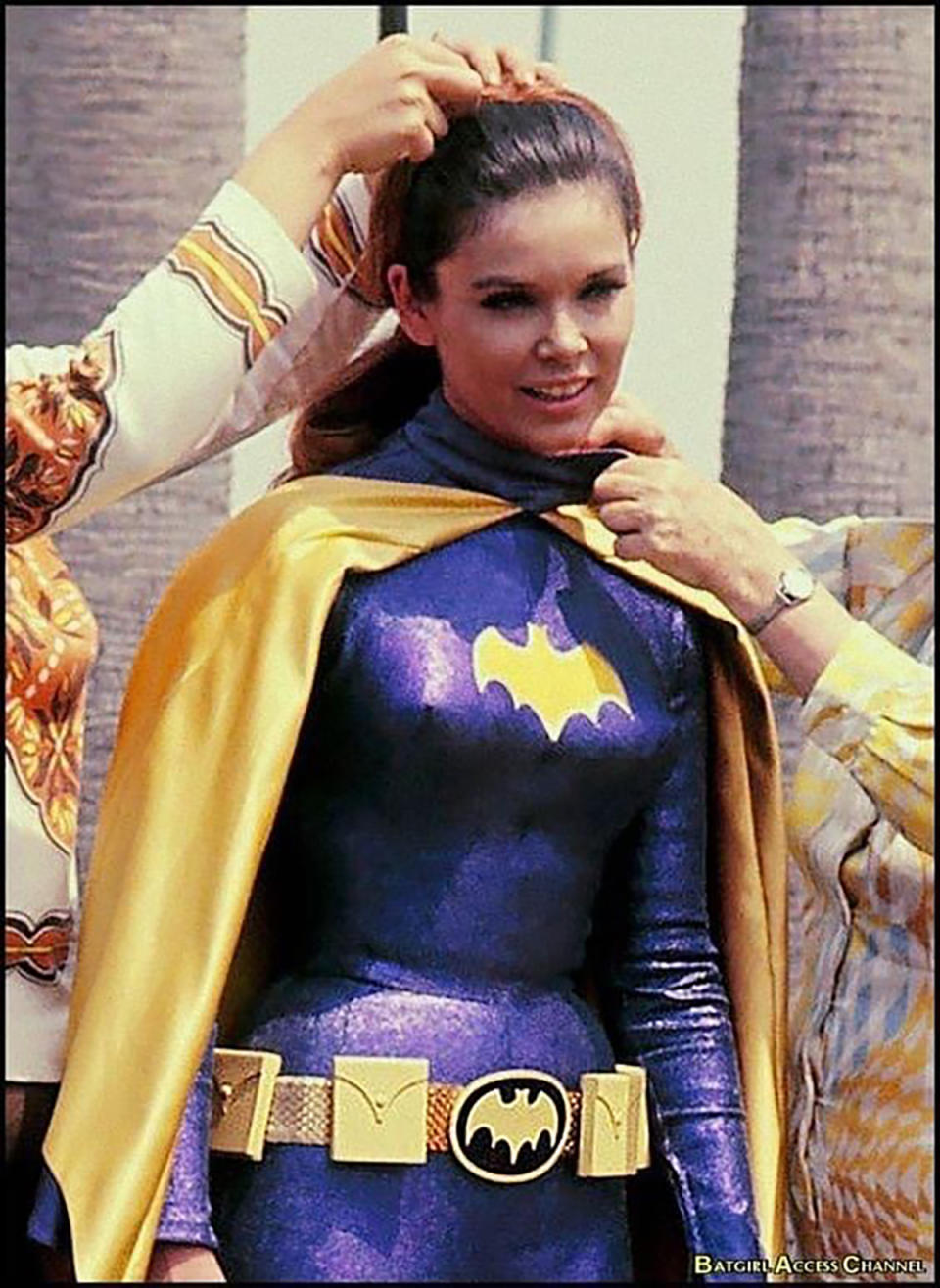
?Twentieth Television/courtesy MovieStillsDB.com
FFW: When the show ended, it must have been hard for Adam and Burt who were there from the beginning, but was the end any kind of major shock to you?
YVONNE CRAIG: It was very matter of fact, I had been on it for one season, it was terrific and I’d liked doing the work, but if all of us told the truth, the truth was we did not know that 45, 50 years later people would still be talking about it. It was a wonderful job, but nobody looked ahead and said, "Oh, this is going to be iconic," because we’re not prescient and we did not even think about that.
I think it should have been a problem for Burt, because he had not been an actor prior to that, and so then you get in this hit series and when you get dumped out of it, where do you go? I had done a lot of work before that, and so went on to do other things, and Adam had a rough time, I think, because of his speech cadence, which is so unique that they hired him partly because of that. You know, the whole, "Hello, Citizens" thing.
When he started reading for other things, they thought he was playing Batman, but that’s who he is and that’s how he talks, and so it hung him up for a while because they couldn’t erase the sound of Batman. Which, again, was not done as part of the character, it was just that he was using his own voice and his own speech cadence. That finally wore off and he found himself getting hired for exactly that.
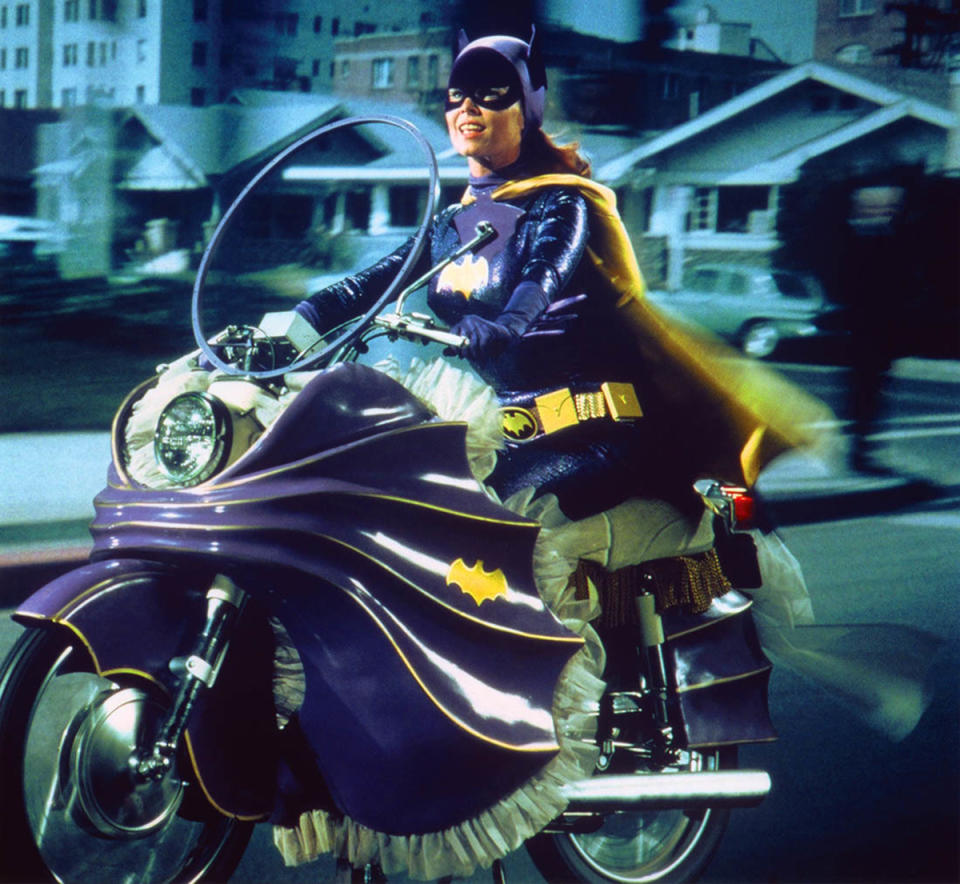
?Twentieth Television/courtesy MovieStillsDB.com
FFW: Were the fight scenes fun for you, given your ballet training?
YVONNE CRAIG: It was terrific fun, and in those days I rode a motorcycle and with the ballet, I got to do all the bike work and the fights. They didn't want me in the fight, but I said, "Think about this logically — it's all choreography, it's all done on a count and if anybody is off the count, you hold up your hand and say, 'Stop.' So I'm not going to get hit, because they don't punch girls, they're not trying to hit you in the face. I'm doing all of the work and spinning away from them so they can't catch me." Then I said, "I know you're not doing it with Adam and Burt, because you really don't want them to have broken noses or black eye," but it was easy for me.
FFW: You mentioned what felt like a spray-on costume. Did you mind that or was it fun?
YVONNE CRAIG: Being a ballet dancer, you’re in leotards all the time and so it was just like another costume. It was very well made. Both the Catwoman and Batgirl costume were designed by the same person, and were very much alike, but not in terms of color. Now that the poor costume designer is dead, Julie Newmar is claiming she designed the Catwoman costume, but she did not.
MUST-READ: Julie Newmar — A Look at the Life, Loves and 70-Year Career of the Original Catwoman
She used to say she did a lot of alterations on it. Well, Pat Barto had won costuming awards, so Julie didn’t — I’m beginning to think Julie had a wild fantasy life. But anyway, what did happen, though, was that Pat had designed this costume and she didn’t cut the top on the bias, and I’m bosomy. So they came to Pat and said, "One of the reasons — no, two of the reasons — we hired Yvonne are being smushed by this costume."
What she did was she cut it on the bias and it was very comfortable. It was a stretch fabric and as the series went on, you didn't want to sit down in it, because super heroines do not have baggy knees, and you knew that if you sat down for too long, the knees were going to get baggy and you've had to go to alterations and have them fixed.
But like I said, it was really comfortable and it had a zipper all the way up the back , so it was easy in and out and it took no time to get in and out of it. It wasn't tight; I wasn't uncomfortable at all.
FFW: Is it interesting to you being a part of this legacy that has gone on for all these years?
YVONNE CRAIG: When the movie came out with Michael Keaton in '89, it was very dark. I remembered back to when we were doing Batman, and the fact that he started out dark in the 30s and 40s. Then when we had the Flower Power movement in the 60s and the show came out, there were people who were very upset that we would be making fun of their Dark Knight or whatever he was.
There were people unhappy about that, and then in '89, when the Michael Keaton movie came out, it was so dark and dismal and everything else, and people were angry because they were expecting it to be as much fun for them as the other Batman was. I kept saying, "It's a sign of the times; this is the time for it to be dark. It will get lighter," and ultimately it did.
But it's an amazing legacy, and I'm always happy to have been part of it.
